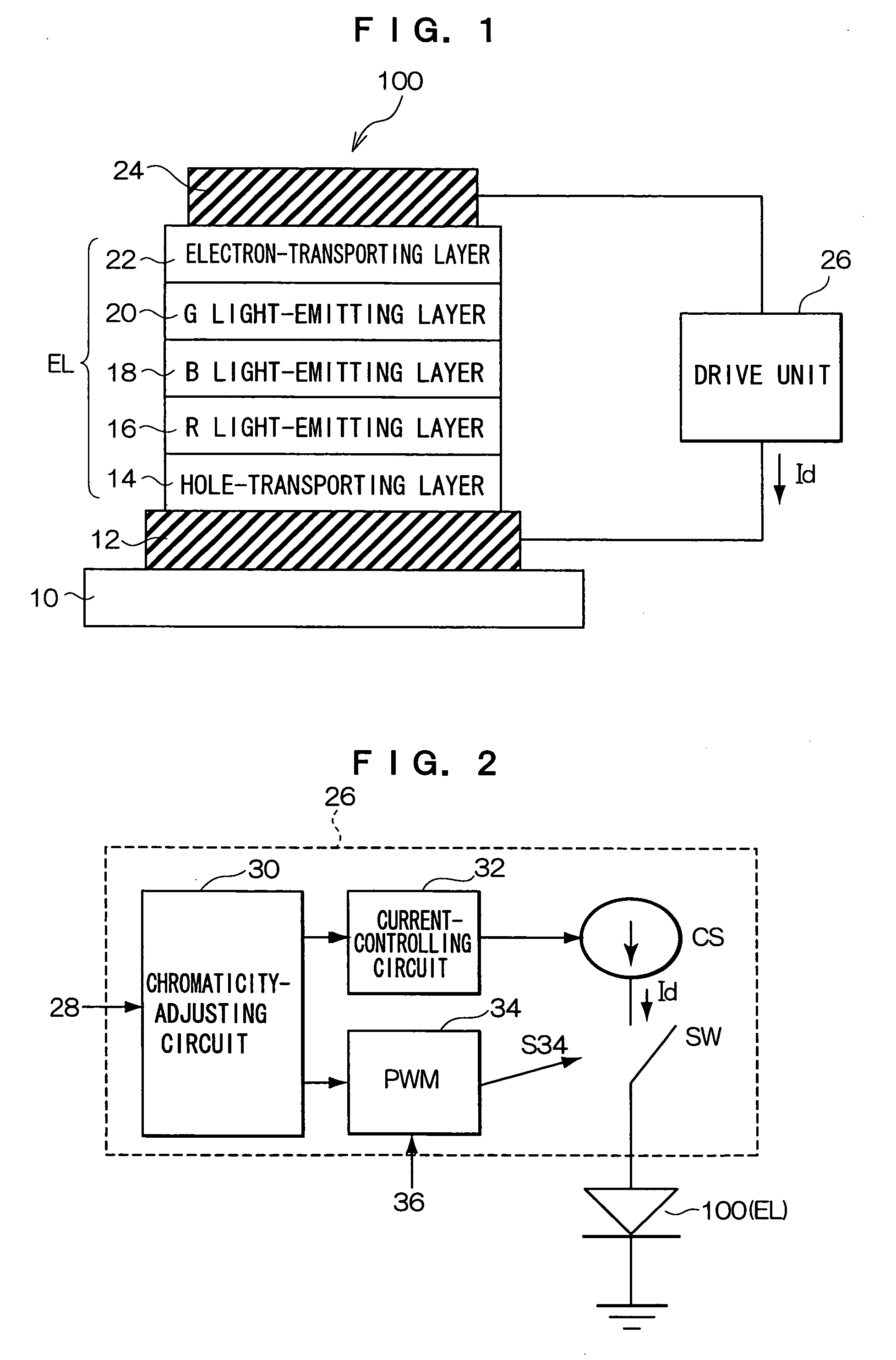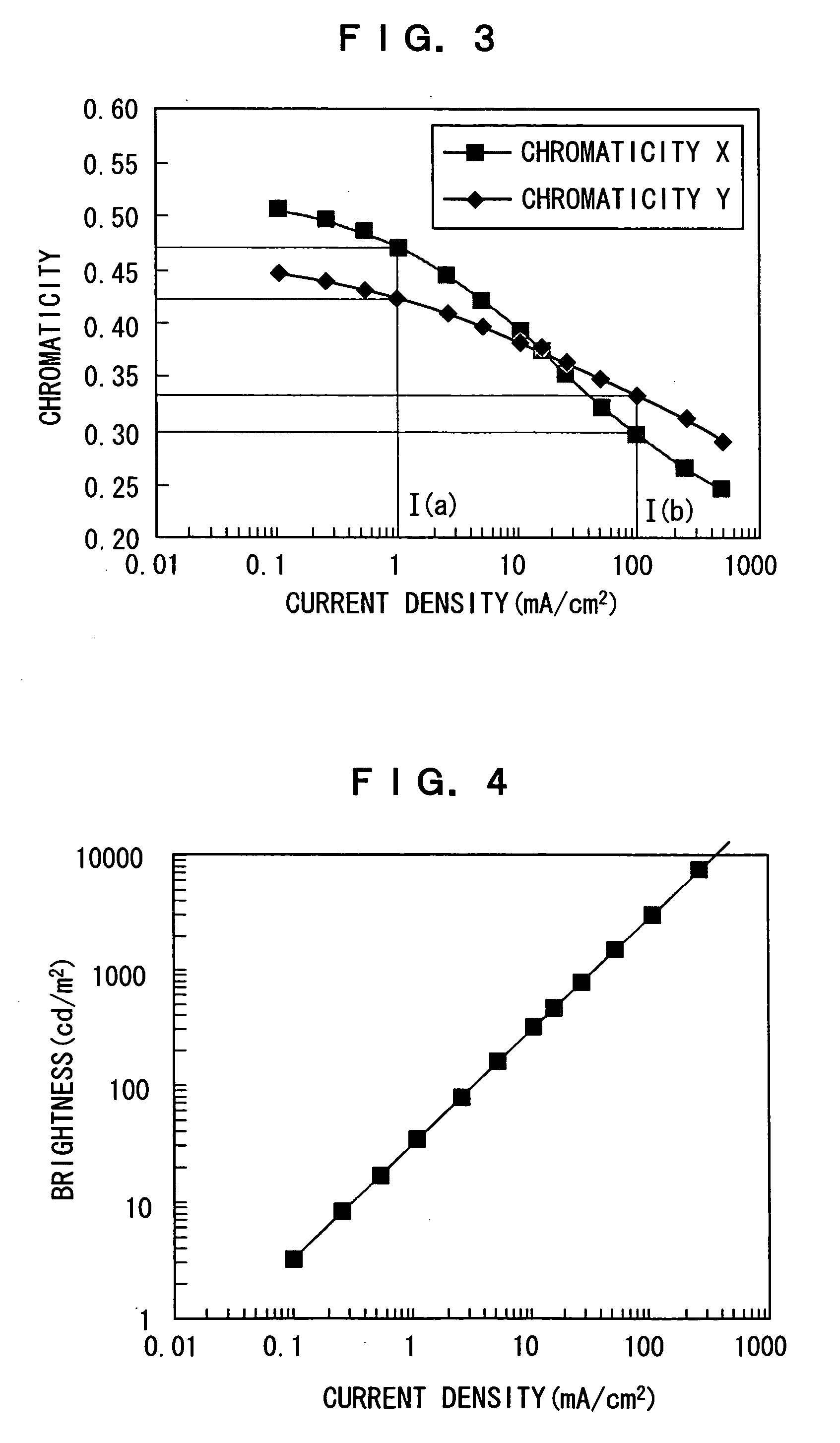Organic Electroluminescent Device Allowing Adjustment of Chromaticity
a chromaticity adjustment and electroluminescent technology, applied in the direction of electroluminescent light sources, static indicating devices, instruments, etc., to achieve the effect of keeping the luminescence brightness almost constan
- Summary
- Abstract
- Description
- Claims
- Application Information
AI Technical Summary
Benefits of technology
Problems solved by technology
Method used
Image
Examples
first example
[0037]FIG. 6 is a chart showing the configuration of the organic EL device in the first example. The organic EL element in this example has an organic EL layer consisting of a hole-injecting layer 14A, a hole-transporting layer 14B, a red light-emitting layer 16, a blue light-emitting layer 18, a hole-blocking layer 40, and an electron-transporting and green light-emitting layer 42. The structure is prepared in the following way:
[0038]First, a glass substrate 10 carrying an ITO electrode 12 previously formed thereon is ultrasonicated and cleaned in water, acetone, and isopropyl alcohol, and treated with far ultraviolet ray (UV) and ozone; then, in a vacuum evaporator (1×10−6 torr, substrate temperature: room temperature), 2-TNATA (4,4′,4″-tris(2-naphthylphenylamino) triphenylamine) is deposited thereon as the hole-injecting layer 14A to a thickness of 140 nm, then α-NPD (N,N′-dinaphthyl-N,N′-diphenyl-[1,1′-biphenyl]-4,4′-diamine) is deposited thereon as the hole-transporting layer 1...
second example
[0041]FIG. 7 is a chart showing the configuration of the organic EL device in the second example. The organic EL element in this example has an organic EL layer consisting of a hole-injecting layer 14A, a hole-transporting layer 14B, a red and blue light-emitting layer 44, a hole-blocking layer 40, and an electron-transporting and green light-emitting layer 42. The structure is prepared in the following way:
[0042]First, a glass substrate 10 carrying an ITO electrode formed thereon is ultrasonicated and cleaned in water, acetone, and isopropyl alcohol and treated with UV and ozone; in a vacuum evaporator (1×10−6 torr, substrate temperature: room temperature), 2-TNATA is deposited thereon to a thickness of 140 nm so as to form the hole-injecting layer 14A, and α-NPD is deposited thereon to form the hole-transporting layer 14B to a thickness of 10 nm. A layer of a blue guest material t(bp)py, a red guest material DCJTB, and a host material CBP codeposited (vapor deposition ratio t(bp)p...
PUM
 Login to View More
Login to View More Abstract
Description
Claims
Application Information
 Login to View More
Login to View More - R&D
- Intellectual Property
- Life Sciences
- Materials
- Tech Scout
- Unparalleled Data Quality
- Higher Quality Content
- 60% Fewer Hallucinations
Browse by: Latest US Patents, China's latest patents, Technical Efficacy Thesaurus, Application Domain, Technology Topic, Popular Technical Reports.
© 2025 PatSnap. All rights reserved.Legal|Privacy policy|Modern Slavery Act Transparency Statement|Sitemap|About US| Contact US: help@patsnap.com



